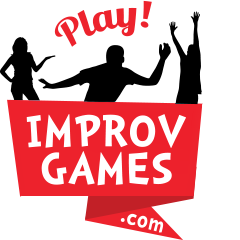The woman was driving a young man in her car.
“I have something I want to tell you,” she said.
“O-kay,” he replied. “I better fasten my seat belt.”
They talked about auto safety and traffic for a little while, then a bell rang and the actors looked up at the rest of the class.
“That’s 20 seconds” I said. “Take a few moments to discuss what you think the audience wants to know about this scene.” The two actors started talking to each other and I gave the same instruction to the rest of the class, “Find a partner and discuss what it is you want to know about this scene, this story.”
At the end of a few moments I asked the actors to continue the scene.
The woman spoke first, “Steve, I’ve always liked you ever since you started dating my daughter.”
They continued for another 20 seconds, the bell rang again and I asked the audience if the actors had answered their question. Most of the audience said ‘yes’.
We ran this exercise for 45 minutes so everyone would have a chance to see what it feels like from both the audience and actor position. Here’s what we discovered:
- The audience is a big guessing machine.
- If their questions aren’t answered soon enough, they lose interest.
- If the actors don’t know what the audience wants, how can they ‘play’ with them?
Here are the three things we kept hearing from the audience throughout the exercise:
- Names/relationships: We want to know the names of the characters and their relationship to each other.
- Where they are: We want to know the location of the interaction. [Home, office, park or outer space]
- Why are we watching? Trickier than the other two, this one seems to involve commitment of the actors (“as if” they know where they are going) and following up on the elements of a scene. (If you are driving in a car, you must be going somewhere that pertains to the scene… not just driving.)
How to run the ‘What do they want’ exercise
- Two actors improvise a scene (not a game).
- After 20 or 30 seconds ring a bell and stop the scene.
- Ask everyone to pair up and discuss what it is that they want to know about the scene (story). Keep this brief, 20 seconds should do it.
- Resist the temptation to discuss this openly – and ask the actors to continue the scene and answer the question that they think the audience wants to know.
- After 20 or 30 seconds stop the scene again and ask the audience/class if their question has been answered.
- Stop and discuss or try it again.
- As the workshop leader, I suggest you model curiosity about the outcome.**
If you try this exercise please write a note below and let us know how it goes. Always learning…
Thanks.
* The class is a summer improv class at a San Francisco Bay Area college that I am co-teaching with two wonderful improv instructors: Paul Killam and Lisa Klein.
** There are more questions about improv than answers, aren’t there?
